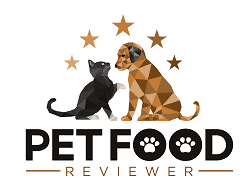What Is Miscanthus Grass?
Miscanthus Grass is a popular ornamental grass that is commonly found in gardens and other outdoor spaces.
There are various different sub-species of this grass, such as Miscanthus X Giganteus, Gracillimus Miscanthus, and Adagio Miscanthus.
However, while it is probably best-known for its place in gardens and green spaces, it also has some industrial uses, such as a source of bio-fuel.
Miscanthus is well-suited to this task given that it is able to be grown on otherwise marginal land and in relatively cold weather conditions.
Furthermore, Miscanthus can be used in some other green processes such as as a building material for construction and insulation.
However, pet owners who have taken the time to review the ingredient list of their dog or cat’s food may have noticed its presence and wondered why it’s being included and if it is a suitable ingredient.
Why Is Miscanthus Grass In Pet Food?
The primary reason that Miscanthus Grass is used in pet food recipes is as a source of dietary fiber.
Dietary fiber is an important component of some pets’ diet, especially some dogs, where it is vital to ensure regular digestion and stools.
Fiber also plays an important role in ensuring that all of the nutritional value from a pet’s food is efficiently absorbed.
Oftentimes, pet food recipes have to supplement the level of fiber present as most of their ingredients are not naturally high in fiber.
While it varies throughout the industry, many brands choose to use ingredients like Tomato Pomace, Dried Beet Pulp, or Pea Fiber as cost-effective and efficient solutions.
However, these ingredients can be controversial as they are by-products of Tomato processing and Beet processing and are considered by some as products that ordinarily go to waste.
However, because Miscanthus Grass is not a by-product and is grown solely for its fiber content, some in the industry believe it preferable.
Moreover, Miscanthus Grass is not grown with the use of herbicides and pesticides, which alternatives like Tomatoes are.
Lastly, there are also claims that Miscanthus Grass is beneficial because it is more ecologically beneficial to grow than other crops and that it is grown locally in the United States and so doesn’t need to be imported from abroad.
Pet Foods Brands That Use Miscanthus Grass
While some other minor ingredients or sources of dietary fiber are widely used throughout pet food recipes, Miscanthus Grass is more of a niche addition and is used by a limited number of brands.
This limited use so far stems from the fact that the use of Miscanthus Grass in pet food is still a relatively new concept.
Despite this, there are some pet food brands that use Miscanthus Grass that you may have heard of, including Diamond, Merrick, Nature’s Variety Instinct, Acana, Orijen, and Nulo.
You can see an example of the use of Miscanthus Grass in a dog food recipe in the below ingredient list of Nulo’s Freestyle Limited+ Puppy Grain Free Salmon Recipe.
As this ingredient list clearly shows, the portion of Miscanthus Grass is small but not insignificant, and therefore it provides a notable portion of dietary fiber.
While many in the industry believe that Miscanthus Grass is preferable addition over alternatives, if for some reason you did not want your pets eating it, we’d advise closely examining the ingredient list of any prospective recipes to check if it is present.




Hi. MIscanthus grass is in Lotus raw cat food and for whatever reason, I notice my cat does this weird licking thing. It seems to subside when I move back to high-end Orijen canned only. Do you think there mught be an allergy to it?
Also, my cat had a weird licking reacting to Darwins raw ( which has tomato pomace) and I absolutely stopped that food when I figured it out.